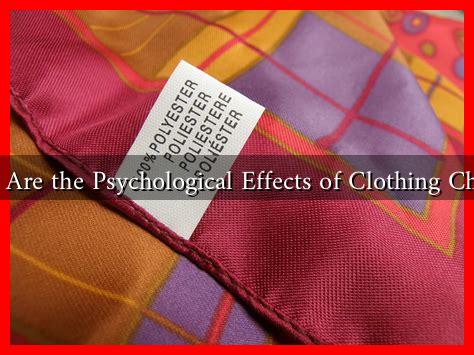-
Table of Contents
What Are the Psychological Effects of Clothing Choices?
Clothing is more than just a means of protection against the elements; it is a powerful form of self-expression that can significantly influence our psychological state and social interactions. The choices we make in our attire can affect our mood, self-esteem, and even how others perceive us. This article delves into the psychological effects of clothing choices, exploring how what we wear can shape our identity and impact our mental well-being.
The Psychology of Color in Clothing
Color plays a crucial role in how we perceive clothing and how it affects our emotions. Different colors can evoke various feelings and associations. For instance:
- Red: Often associated with passion and energy, wearing red can increase confidence and assertiveness.
- Blue: Known for its calming effects, blue can promote feelings of tranquility and stability.
- Black: Frequently linked to sophistication and power, black can enhance feelings of authority.
- Yellow: A bright and cheerful color, yellow can uplift mood and stimulate creativity.
Research has shown that individuals who wear colors that align with their desired emotional state often experience a boost in mood and confidence. For example, a study published in the journal *Color Research and Application* found that participants wearing red reported higher levels of confidence compared to those in blue or gray attire.
Clothing and Self-Perception
The clothes we wear can significantly influence our self-perception. This phenomenon is often referred to as “enclothed cognition,” which suggests that clothing can affect our psychological processes. A study conducted by Adam and Galinsky (2012) demonstrated that participants who wore a lab coat associated with a doctor performed better on attention-related tasks than those who wore regular clothes. This suggests that clothing can enhance cognitive performance by altering our mindset.
Moreover, clothing can serve as a form of identity expression. For instance, individuals who identify with specific subcultures, such as goth or punk, often use clothing to communicate their values and beliefs. This form of self-expression can lead to increased self-esteem and a sense of belonging within a community.
The Social Implications of Clothing Choices
Clothing choices also have significant social implications. The way we dress can influence how others perceive us and how we interact with them. Research indicates that people often make snap judgments based on appearance, which can affect social interactions in various contexts, including:
- Professional Settings: In the workplace, attire can impact perceptions of competence and professionalism. A study by the *Journal of Experimental Social Psychology* found that individuals dressed in formal attire were perceived as more competent than those in casual clothing.
- Social Situations: Clothing can affect social dynamics, such as group inclusion or exclusion. For example, wearing trendy or fashionable clothing can enhance social acceptance among peers.
- Dating: First impressions in dating scenarios are often influenced by clothing choices. Research shows that individuals tend to prefer partners who dress in a way that aligns with their own style preferences.
Case Studies and Real-World Examples
Several case studies illustrate the psychological effects of clothing choices. For instance, a well-known experiment involved participants wearing either a superhero costume or regular clothing. Those in superhero attire reported feeling more powerful and confident, demonstrating how clothing can influence self-perception and behavior.
Another example is the rise of “athleisure” wear, which has transformed how people view fitness and leisure. Wearing athletic clothing not only promotes a healthy lifestyle but also enhances feelings of motivation and readiness to engage in physical activities.
Conclusion
In conclusion, the psychological effects of clothing choices are profound and multifaceted. From influencing our mood and self-esteem to shaping social interactions and perceptions, what we wear plays a crucial role in our daily lives. Understanding these effects can empower individuals to make more intentional clothing choices that align with their desired emotional states and social goals. As we navigate our personal and professional lives, it is essential to recognize the power of clothing as a tool for self-expression and psychological well-being.
For further reading on the psychological impact of clothing, you can explore resources such as the Psychology Today article on the psychology of clothing.


